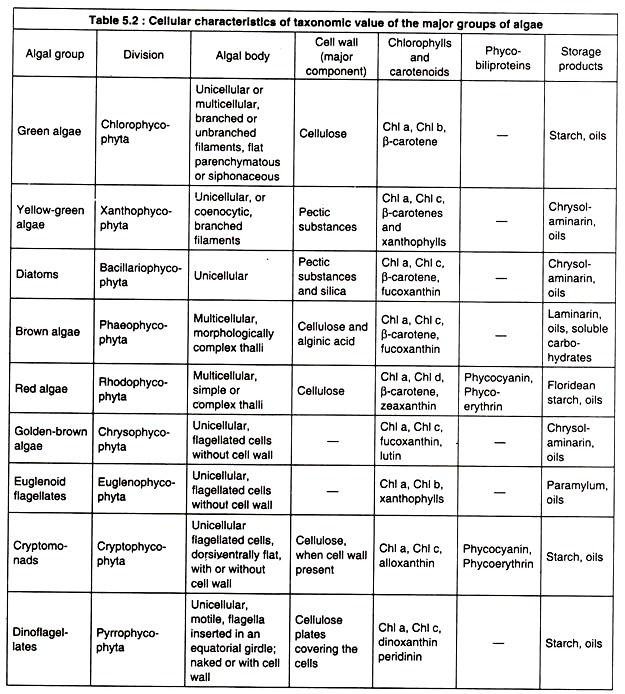In this article we will discuss about the classification of algae.
A generally agreed classification of algae recognizes nine broad taxonomic groups, called Divisions. These are Chlorophycophyta, Xanthophycophyta, Bacillariophycophyta, Phaeophycophyta, Rhodophycophyta, Chrysophycophyta, Euglenophycophyta, Cryptophycophyta and Pyrrophycophyta.
Among these, the members of the first five Divisions are distinctly plant-like organisms, but the others, particularly the flagellates, have some animal-like characters. For example, Euglena is included both in algae and in the protozoa under the class Phytomastigophora.
The major characteristics of taxonomic significance used in the classification of algae have been tabulated in Table 5.2.
These characteristics include the photosynthetic pigments, nature of photosynthetic reserve materials, the composition of cell wall or absence of cell wall, cellular and thallus morphology and reproductive behaviour.
Some representative genera of the different algal groups are named in Table 5.3:
The algae are polyphyletic in origin. Several independent evolutionary lines have resulted in their development. One such line evolved into the green algae which include both unicellular representatives and multicellular filamentous or parenchymatous forms.
The primitive members, like Chlamydomonas and related genera, are provided with features such as eye-spot and contractile vacuoles which are reminiscent of protozoal characters. The green algae with chlorophyll a and b are possible progenitors of green plants. The red algae represent a different line of evolution.
The absence of any motile cells in their life-cycle and presence of phycobiliproteins are unique features of the red algae. However, they share these two characters with the cyanobacteria. The brown algae, together with the diatoms and golden-brown algae seem to have originated in a separate evolutionary line. The euglenoids are closer to the flagellated protozoa, but are also related to the primitive green algae.

